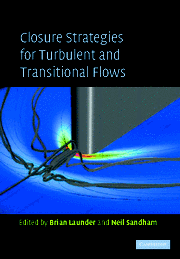13 - Large Eddy Simulation of Industrial Flows?
Published online by Cambridge University Press: 06 July 2010
Summary
Abstract
This chapter develops the somewhat controversial opinion that, at present and in the near future, industry is not likely to use LES for actual engineering applications, despite, or rather because of, the daily use of (RANS) CFD. While the effect of subgrid-scale models is small, there is a need for further improvement of numerical schemes in complex geometry, and some steps in this direction are presented. Finally some test-cases of industrial relevance are presented in the frame of acoustics and fluid-structure interaction. These are among the few niches left vacant by RANS where industry might spend the large computing and staff-time resources required for conducting a complex LES.
Introduction
Despite widespread academic use of LES, there are still very few ‘industrial’ LES calculations. In the year 2000, following a decade in which LES has been touted as the route for by-passing turbulence model limitations, it still needs to be shown that industry is ready to invest its own resources, manpower and computing, to resolve, via LES, a relevant engineering problem, without either the incentive of external funding, or for the sake of pure research investigations. We do not count here as ‘industrial’ the proactive government initiatives such as state- or EU-funded projects, or the ASCI project in the US.
Industry has taken advantage of increased computer power to model more realistic geometries and complex physical processes rather than resorting to advanced turbulence modelling, either LES or RANS (Reynolds-averaged Navier– Stokes). Even second-moment closures are often regarded as too demanding. In power plants for instance, it has been realised that isolating a component for a numerical simulation always results in crude approximations concerning the inlet conditions. In most research experiments great efforts are devoted to obtaining clean and well understood inlet conditions, but still on many occasions these are not well enough known in the computor's opinion (ERCOFTAC workshops, Rodi et al. 1998). In practice no section of a plant contains honeycombs or careful contractions, or a straight pipe 100 diameters long, to insure fully developed flow that would allow a component-by-component CFD analysis. The numerous bends, sudden expansions, obstacles, etc. always induce strong persistent secondary motions which need to be taken into account, even if attention is restricted to a limited sub-component of the plant (Archambeau et al. 1997).
- Type
- Chapter
- Information
- Closure Strategies for Turbulent and Transitional Flows , pp. 392 - 406Publisher: Cambridge University PressPrint publication year: 2002
- 3
- Cited by



